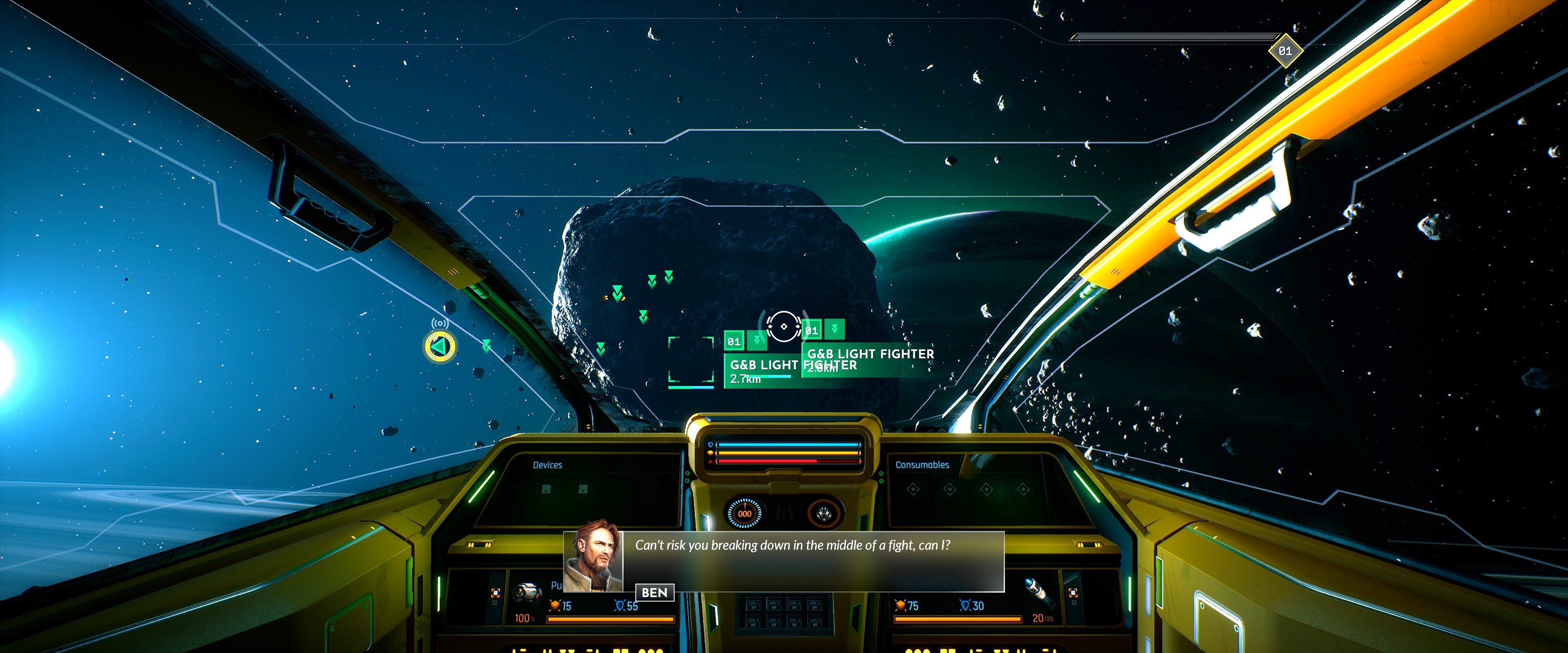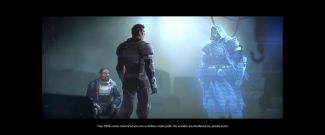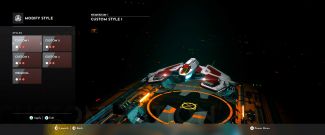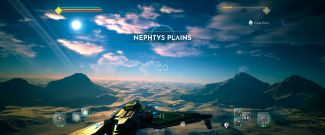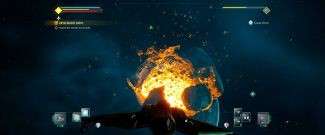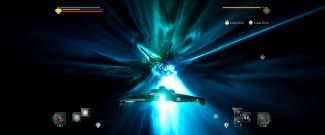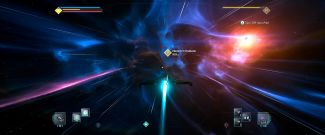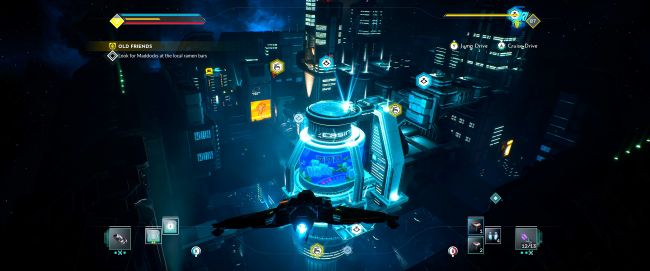A mining mission goes wrong. You have been kidnapped and you are trying to escape, when an entire team attacks the base you are trapped in. Everyone seems to be against you, but thanks to an unexpected new acquaintance, you manage to save a friend and escape danger. In front of you are explosions, weapons with flashing neon lights and a beautiful dance of colors. You disable your spaceship’s electronic jamming equipment, allowing you to zoom away at faster than the speed of light. This initial scenario helps the player to quickly learn the basics of Everspace 2 and I think it is presented in a good and very entertaining way.
If you’ve played its predecessor, a roguelite, this sequel will feel both familiar and strange. The best possible comparison is with the difference between Dawn of War and Dawn of War 2. This title belongs to a new genre, although it retains some aspects of the original. We no longer have to go through the constant stress of dying and having to start over, but we play the same character as in the original, Adam. Now he’s a military clone on the run from a regime that wants to hurt him. The main difference is that the sequel expands the cosmos and allows you to travel to different solar systems whenever you want. It’s not completely open like the one in No Man’s Sky, but lets you fly between wider open areas. In each star system, you can explore multiple locations, both randomly created and handcrafted. You choose where you want to fly, what missions to do, and how to upgrade your ship or spaceships.
You can change colors and customize absolutely everything, from skins to weapon systems. If you give your companions the resources you collect, you can unlock very powerful upgrades. What immediately strikes me is how modular all the elements of the spacecraft are; you can even upgrade individual components or weapons by building upgrades with the materials. Like in action RPGs, there’s a color system that indicates which items are better and worse, and you’ll constantly have to remove, add, upgrade, and upgrade items from your spaceship. Everything has its function, even objects with the same use as Diablo potions, for example. They are used to briefly upgrade your weapons, increase your health, and much more. If you like looter-shooters with RPG elements in a vast universe, you will really enjoy this title.
Advertisement:
In addition to improving your spaceships throughout the adventure, you can also buy new ones. There are multiple classes you can use, and while in traditional RPGs you’re usually limited to one class, in this one you can switch between them if you have enough in-game currency to do so. The classes are divided into three categories: light, medium and heavy. There are starships with machine gun turrets and plentiful shields, as well as aircraft carriers with fleets of launchable drones. You can also choose lightly armored ships which have more mobility than the enemy. There’s a perfect spaceship for everyone, and I like that all categories are viable.
Each class has an ultimate that helps you clear the battlefield. For example, bombers have what looks like a small nuclear weapon, and fighters allow you to do a lot of damage with their weapons in a short time. There’s also a class that allows you to cripple about five starships in a sort of network that connects them and shares damage taken between them. Additionally, you can upgrade elements of your ship such as shields or unlock special abilities. There are many interactive systems you can tinker with and all ships have their strategic strengths and weaknesses. I discovered very quickly which were my favorites: Interceptor, Striker and Vindicator. The Interceptor, as the name suggests, is useful for battling enemies and dealing damage without being slow or difficult to control. The Striker is very good at taking out multiple targets at once without being limited by its size or speed. I found the Vindicator a lot of fun because it’s a small plane full of drones that you can launch.
Advertisement:
You are one with your spaceship and you will spend all your time in the pilot’s seat. To make this work, the levels are designed with open spaces and small puzzles. You can navigate inside space structures, discover secrets and solve puzzles in your ship. There are several activities to do outside of the main missions. These tell a story that includes 2D art, voice acting, and different characters. Unfortunately, the plot is the least interesting element of the game: it is not very memorable, but it does introduce moments of action and sometimes leads to very entertaining dialogue.
Something I like is that they kept your AI companion, Hive, which we already know from the previous title. He doesn’t like being in the same boat as you and says so constantly. I loved the duo the characters formed in the previous game and I love it now too. Thanks to the secondary activities, the dynamic gameplay and the open world where there is always something to do, this work rests on a very solid foundation. I appreciate the content that Rockfish Games has created because it’s once again a cool space show with amazing sounds. The music and colors remind me of Thor: Ragnarök. It’s a very distinctive sound and helps the game stand out, along with its high-end visuals. One moment you’re fighting on a planet ripped in half by a giant weapon and the next you’re traveling in complete darkness through the clouds to find old hulks to loot. Then you end up flying over sand dunes and shooting enemies on planetary bases. For me, the best thing about the game is its scenery changes and all the beautiful places to explore in space.
When you have completed the campaign, there are more things you can do. As in Diablo III with the Nephalem Rifts, in this game there are the Ancient Rifts. In them, the battlefield absorbs you and you have to fight enemies through a series of levels. When you complete a level, you have a few options to continue. It works the same way as the first game, as the idea is to give you some sort of content at the end that will challenge you and present various random scenarios for you and your ship. I think it works just fine, although the star systems you pass through level up over time and eventually pose more difficult threats. This tool is very well received from the start.
Everspace 2 offers great graphics, a fantastic soundtrack, amazing sounds, and an incredibly fun gameplay loop. I didn’t expect the intense, easy-to-play action to continue throughout the game, but even after spending 50 hours on it, I didn’t feel bored or dissatisfied. If you finish it completely, you can expect more or less 100 hours of gameplay. Although the story is insufficient, I liked a lot of the characters, and the dynamics, environments, puzzles and all the other elements make up for it this lack.
Everspace 2 is best enjoyed when you get off the beaten path and explore. You will always find a puzzle, a mine to penetrate or a base full of enemies to explode. It’s a bit reminiscent of the 1988 Starglider 2 in that regard. Without a doubt, it’s the best I’ve played in this genre this year, next to Diablo IV. If you like action RPGs, this title is for you.

